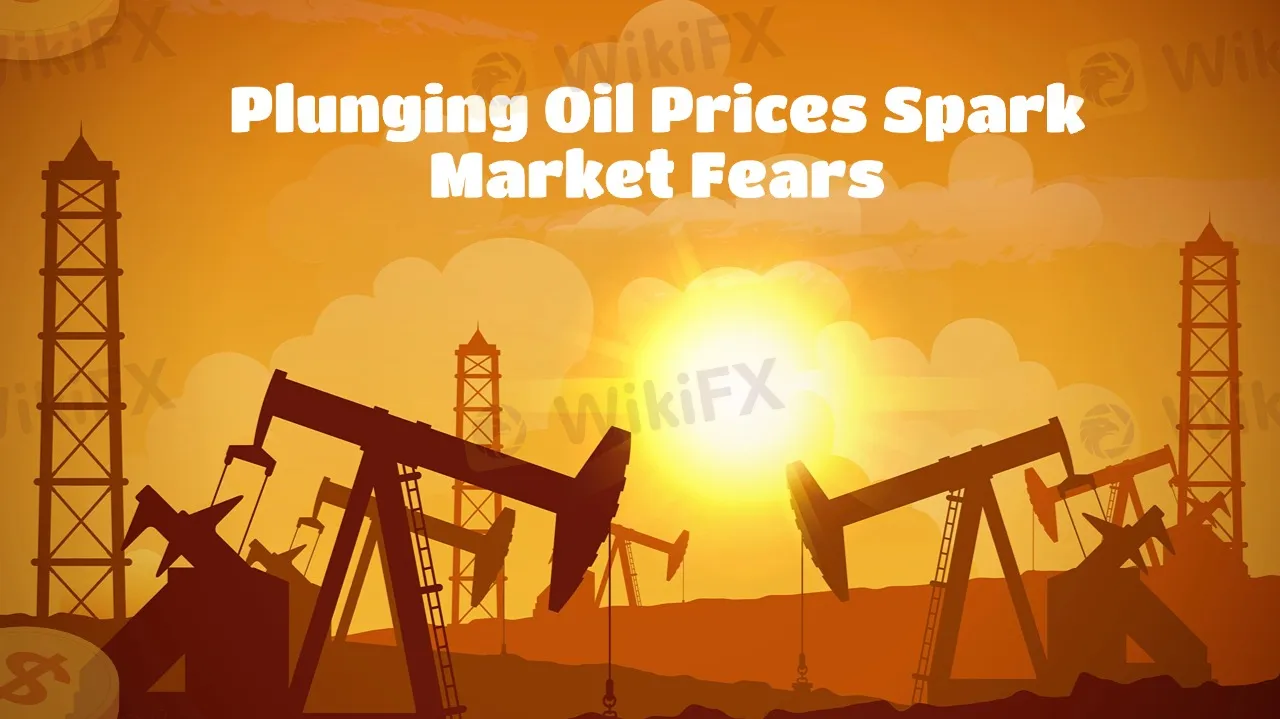简体中文
繁體中文
English
Pусский
日本語
ภาษาไทย
Tiếng Việt
Bahasa Indonesia
Español
हिन्दी
Filippiiniläinen
Français
Deutsch
Português
Türkçe
한국어
العربية
Plunging Oil Prices Spark Market Fears
Abstract:International oil prices have declined for two consecutive days, mainly due to the impact of U.S. tariff hikes, which have intensified market concerns over a global economic slowdown.

OPEC+ plans to increase production starting in April, further adding to market supply pressure and weighing on oil prices.
Recently, U.S. President Donald Trump announced tariff increases on products from Canada, Mexico, and several Asian countries, stating that trade pressure would not be eased. This policy has triggered market panic, prompting investors to reassess the global economic outlook and anticipate a decline in energy demand.
Additionally, investors are worried that the U.S. economy may be entering a “transition period” or even facing a recession, leading to heightened risk aversion and the sell-off of crude oil and other risk assets. Meanwhile, OPEC+s decision to increase production has created additional pressure on the supply side. Although Russia has hinted at possible adjustments, short-term supply growth still poses a challenge to oil prices.
In the short term, oil prices remain under downward pressure, but the market will closely monitor OPEC and IEA‘s monthly reports, U.S. inventory data, and the Federal Reserve’s monetary policy stance. If demand declines more than expected or crude oil inventories continue to rise, prices may fall further.
However, if the Federal Reserve adopts a more dovish stance, market sentiment may recover to some extent. Overall, given the economic slowdown, rising risk aversion, and OPEC+ production increases, the outlook for oil prices remains uncertain.
Disclaimer:
The views in this article only represent the author's personal views, and do not constitute investment advice on this platform. This platform does not guarantee the accuracy, completeness and timeliness of the information in the article, and will not be liable for any loss caused by the use of or reliance on the information in the article.
Read more

Fed Meeting Approaches: Can the U.S. Dollar Regain Strength?
No policy change, but shifting signals — will the Fed meeting steer the dollar’s next move?

ALERT! Morfin FX - The Scammer is Operating without a License
Morfin FX indeed has a nice trading software by which you can trade. But is it a safe bet? Does it carry any license? Can you withdraw money from it? Read our review of this forex broker.

ZFX: A Closer Look at Its Licences
In an industry where safety and transparency are essential, the regulatory status of online brokers has never been more important. For traders seeking to protect their capital, ensuring that a platform operates under recognised and stringent oversight can make all the difference. Keep reading to learn more about ZFX and its licenses.

XChief Offers $100 No-Deposit Bonus for New Verified Clients
XChief has launched a no-deposit bonus promotion that provides new clients with a $100 trading bonus without requiring an initial deposit. The promotion is intended to allow users to test the platform’s services and trading conditions before committing their own funds.
WikiFX Broker
Latest News
ZFX: A Closer Look at Its Licences
XM Rolls Out New Forex Trading Competition Platform for 2025
Should you buy or sell US dollars in the next three to six months?
Tradehall Broker Review 2025: Read Before Trade
Inside MBI: The Billion-Dollar Ponzi Scheme That Shook Malaysia
IronFX Review 2025: Is This Broker Trustworthy or a Scam?
Exclusive Markets MT4 and MT5 Review 2025
WikiFX “Elite Night · Bogotá” Concludes Successfully
Is Copy Trading of AMarkets a Good One?
Corsa Futures Review 2025: Read Before You Trade
Currency Calculator


